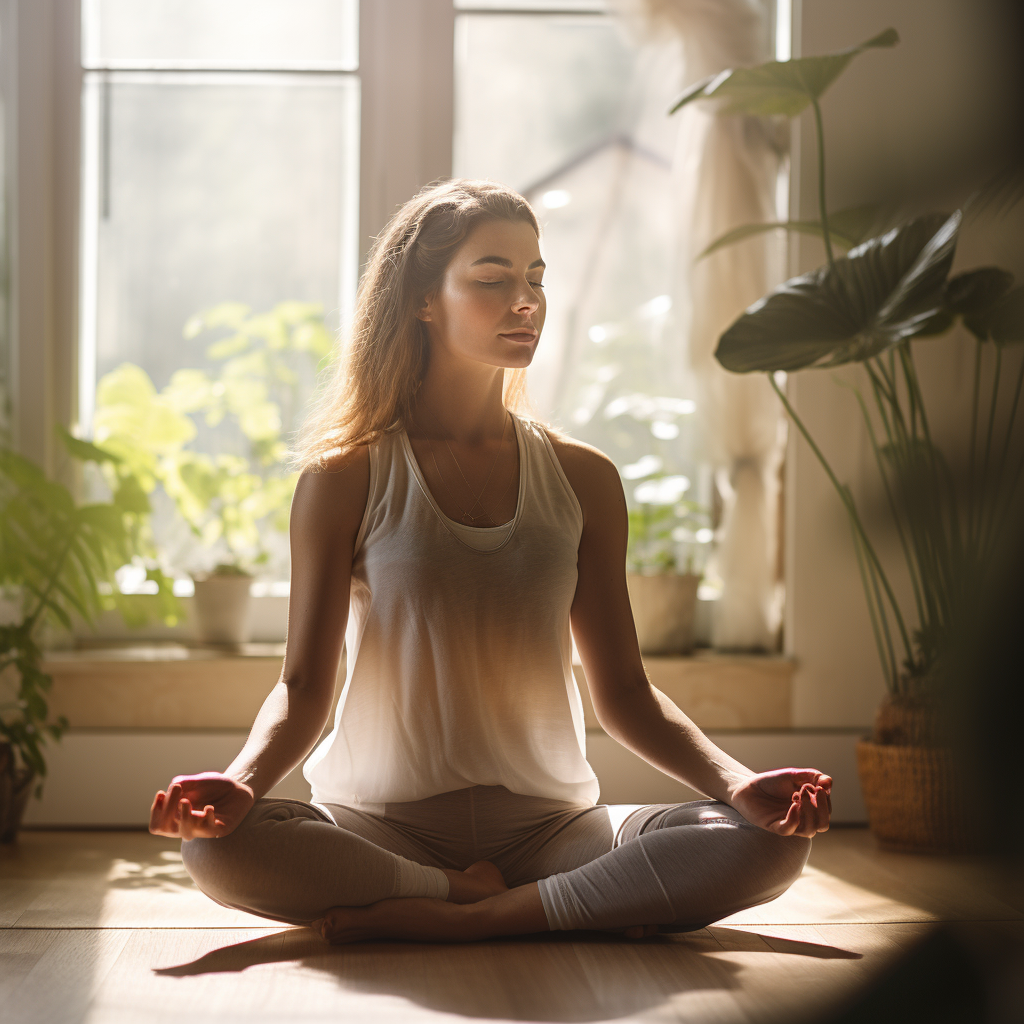In today’s fast-paced world, stress has become an inevitable part of our lives. The constant demands of work, family, and other responsibilities can take a toll on our mental and physical well-being. Fortunately, meditation offers a powerful antidote to the stressors of modern life. This ancient practice has been proven to promote relaxation, reduce anxiety, and enhance overall mental health. In this article, we will explore various meditation techniques and provide practical tips to help you incorporate meditation into your daily routine for effective stress relief.
- Mindfulness Meditation:
- Begin by finding a quiet and comfortable space to sit or lie down.
- Focus your attention on your breath, observing each inhalation and exhalation.
- When your mind starts to wander (as it inevitably will), gently bring your focus back to your breath.
- Gradually expand your awareness to include sensations, sounds, and thoughts, without judgment.
- Guided Meditation:
- Utilize guided meditation apps or recordings led by experienced instructors.
- Choose a meditation that aligns with your specific goals, whether it’s stress reduction, better sleep, or increased focus.
- Follow the guidance provided, allowing your mind to follow the soothing voice and imagery.
- Body Scan Meditation:
- Lie down and bring your attention to different parts of your body, starting from your toes and moving up to the top of your head.
- Notice any tension or discomfort, and consciously release it as you continue to scan your body.
- This technique promotes relaxation and a heightened awareness of the mind-body connection.
- Loving-Kindness Meditation:
- Cultivate feelings of love and compassion by directing positive thoughts towards yourself and others.
- Start by sending well-wishes to yourself, then extend these wishes to friends, family, and even those with whom you may have difficulties.
- This practice fosters a sense of connection and reduces negative emotions.
- Transcendental Meditation:
- Practice this technique by silently repeating a mantra for 15-20 minutes, allowing your mind to settle into a state of deep relaxation.
- Choose a mantra that resonates with you, or receive one from a certified Transcendental Meditation instructor.
- Breathing Exercises:
- Deep, conscious breathing is a fundamental aspect of many meditation techniques. Practice diaphragmatic breathing by inhaling deeply through your nose, allowing your abdomen to expand, and exhaling slowly through your mouth.
- Incorporate breath awareness into your meditation sessions, focusing on the rhythmic flow of your breath to anchor your mind in the present moment.
- Mindful Walking:
- Engage in walking meditation by taking slow, deliberate steps while maintaining awareness of each movement.
- Pay attention to the sensation of your feet touching the ground, the movement of your limbs, and the surrounding environment. This technique is an excellent way to combine meditation with physical activity.
- Use Meditation Apps:
- Leverage technology to support your meditation practice. Numerous meditation apps offer guided sessions, timer functionality, and progress tracking.
- Apps like Headspace, Calm, and Insight Timer provide a variety of meditation options suitable for beginners and experienced practitioners alike.
- Posture and Comfort:
- Sit or lie down in a comfortable position during meditation. Ensure that your posture supports alertness without strain.
- Use cushions or a meditation bench to maintain a relaxed yet attentive posture. Comfort enhances your ability to focus during meditation.
- Progressive Muscle Relaxation:
- Incorporate progressive muscle relaxation into your meditation routine. Tense and then gradually release tension in different muscle groups, starting from your toes and working your way up to your head.
- This technique promotes physical relaxation and helps alleviate the physical manifestations of stress.
- Metta Meditation for Self-Compassion:
- Metta, or loving-kindness meditation, extends beyond others to cultivate compassion for oneself. Direct positive intentions and well-wishes towards your own well-being.
- Develop a kinder, more compassionate relationship with yourself, fostering resilience and emotional balance.
- Create a Meditation Corner:
- Dedicate a specific area in your home as a meditation space. Personalize it with items that bring you a sense of peace, such as candles, plants, or meaningful objects.
- Having a designated space can signal to your mind that it’s time to enter a focused, meditative state.
- Mindful Eating:
- Transform your daily meals into opportunities for mindfulness. Pay attention to the textures, flavors, and smells of your food.
- Eating mindfully can foster a deeper connection with your body, reduce stress, and promote healthier eating habits.
- Silent Retreats:
- Consider attending a silent meditation retreat to deepen your practice. These retreats provide an immersive experience, allowing you to disconnect from the outside world and focus entirely on your meditation journey.
- Journaling after Meditation:
- Reflect on your meditation experience by journaling your thoughts and emotions afterward. This practice can help you track your progress, identify patterns, and gain insights into your mental well-being.
Practical Tips for Successful Meditation:
- Consistency is Key:
- Establish a regular meditation routine, even if it’s just a few minutes each day.
- Consistency enhances the effectiveness of meditation and helps integrate it into your daily life.
- Create a Peaceful Environment:
- Choose a quiet and comfortable space for your meditation practice.
- Consider using soft lighting, cushions, or essential oils to enhance the calming atmosphere.
- Start Small and Progress Gradually:
- If you’re new to meditation, begin with shorter sessions and gradually increase the duration as you become more comfortable.
- Be Patient and Gentle with Yourself:
- Meditation is a skill that develops over time. Be patient with yourself and avoid self-judgment.
- If your mind wanders, gently bring it back to the present moment without frustration.
- Explore Different Techniques:
- Experiment with various meditation techniques to find what works best for you.
- Diversity in your practice can keep it interesting and address different aspects of your well-being.
Conclusion:
Incorporating meditation into your daily routine can be a transformative journey toward stress relief and overall well-being. By exploring different techniques and following practical tips, you can create a personalized meditation practice that fits seamlessly into your lifestyle. Remember, the key is consistency, patience, and a commitment to nurturing your mental and emotional health through the ancient art of meditation.





